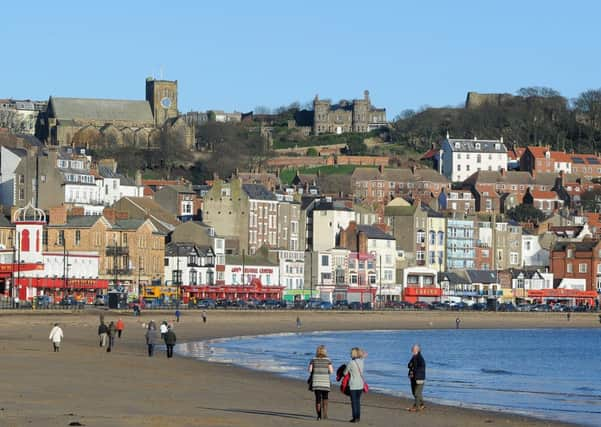Andrew Vine: Tide of neglect and decay that must not swamp our glorious coast resorts


That magic draws in the weekenders and day-trippers to wander around Whitby, Scarborough, Filey and Bridlington, well wrapped up against the blustery squalls that blow away the cobwebs and, on the best days, when the car parks are full, it’s a late-season boost to the resorts’ businesses.
But the greyer days can cast our seaside towns in a light more unkind than the high days of summer when the sunshine lends them a glow.
Advertisement
Hide AdAdvertisement
Hide AdA tide of shabbiness has washed over too many streets, leaving them unkempt and down at heel. Once-elegant crescents of houses that would be cherished if they were in Bath or Belgravia, instead of Scarborough or Bridlington, are drab and falling into disrepair, all peeling paint and rotting window-frames.
Even hotels, reliant upon attracting guests, exhibit this couldn’t-care-less attitude to their upkeep. The exteriors of many are scruffy, and the interiors are little better, their threadbare carpets and faded decor hardly an inducement for visitors to shell out their money on staying.
The rot has been setting in for a long time, 30 years and more. I worked at the coast then, and was saddened to see it start to struggle. The effects of the boom in affordable foreign package holidays that had begun a decade earlier were already plain.
The days of hotels and guest houses being booked up from Easter to September were receding into the past and owners faced a drastic drop in their income. If that was not bad enough, the industrial upheavals of the time, which caused so much unemployment in West and South Yorkshire, where traditionally the bulk of the east coast’s visitors came from, delivered another body blow, putting even a short break at the seaside beyond the means of many
Advertisement
Hide AdAdvertisement
Hide AdA dispiriting pattern began to emerge. One by one, guest houses and privately-run hotels began to close and with their loss the character of the resorts changed. These little businesses had filled the streets with colour, brightly painted in yellows or reds or blues, festooned with hanging baskets and window boxes overflowing with flowers.
The couples who owned them had a particular affinity with the guests who came year in and year out, because often enough they had moved to the coast from the same industrial towns.
They sometimes gave their guest houses slightly outlandish names, made up by welding bits of their first names together. So there were places like Ronmar, run by Ron and Margaret, or Brydor, for Bryan and Doreen, which added a lovely touch of quirky individuality to the colourful streets.
But owners increasingly had no choice but to throw in the towel. Retirement homes sprang up all over the place, as hotels were converted, at least continuing to be well-maintained, but there was also a darker trend.
Advertisement
Hide AdAdvertisement
Hide AdProperties were snapped up cheaply by landlords who knew their way around the system and split up into bedsits that were filled with the unemployed, a large proportion of whom were encouraged to relocate from the industrial towns. The coast had no jobs to offer, but it had plenty of empty accommodation.
The landlords counted the housing benefit payments rolling in and spent the absolute minimum they could on the upkeep of these dingy warrens of rootless people who had hit rock bottom.
There are still brightly-painted guest houses with quirky names to be found, their window boxes and hanging baskets waiting for next summer to be filled with flowers, but often they are isolated dabs of colour on streets where the legacy of all those bedsits is forlorn and scruffy buildings that haven’t seen a lick of paint in years.
Our coastal towns deserve better, and so do the neighbours who do their utmost to make their businesses smart and welcoming. It’s time to sweep away the detritus left behind by the social changes of three decades ago, and encourage property owners to play their part in helping the resorts show the brightest face they can.
Advertisement
Hide AdAdvertisement
Hide AdAnd there is money to be made in doing so. Staying in Scarborough at the weekend and visiting two fairly new restaurants which have brought formerly empty and scruffy buildings back to vibrant life, the evidence was there. Attractive inside and out, every table was full and there were substantial numbers of visitors amongst the customers.
The coast’s battle for trade against package holidays continues and, whilst the days of every room being full from spring to autumn will never return, there’s still a decent living to be made, not least from the people of Yorkshire who hold their seaside in such affection.
But if the visitors are to come, and return because they like what they find, the towns we hold so dear need to smarten themselves up. And doing that can be as simple as a fresh coat of paint.